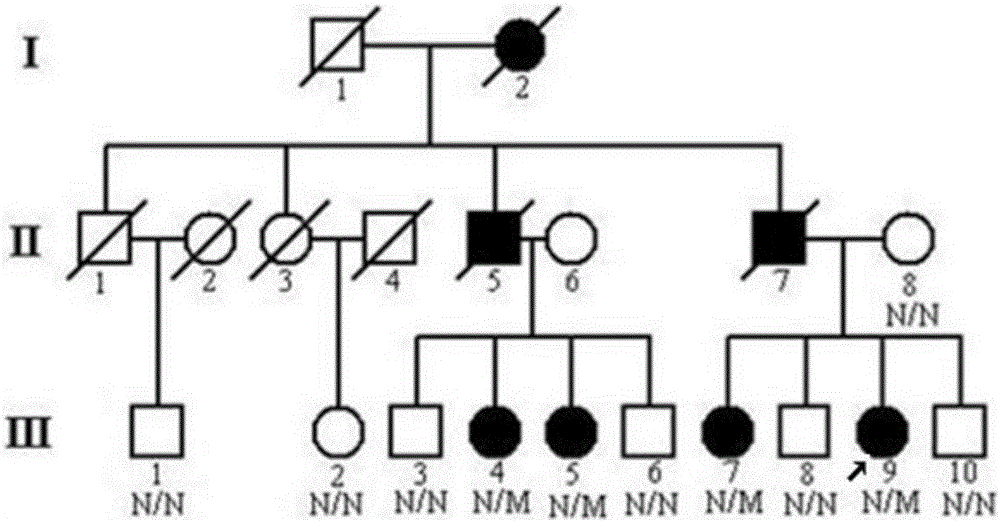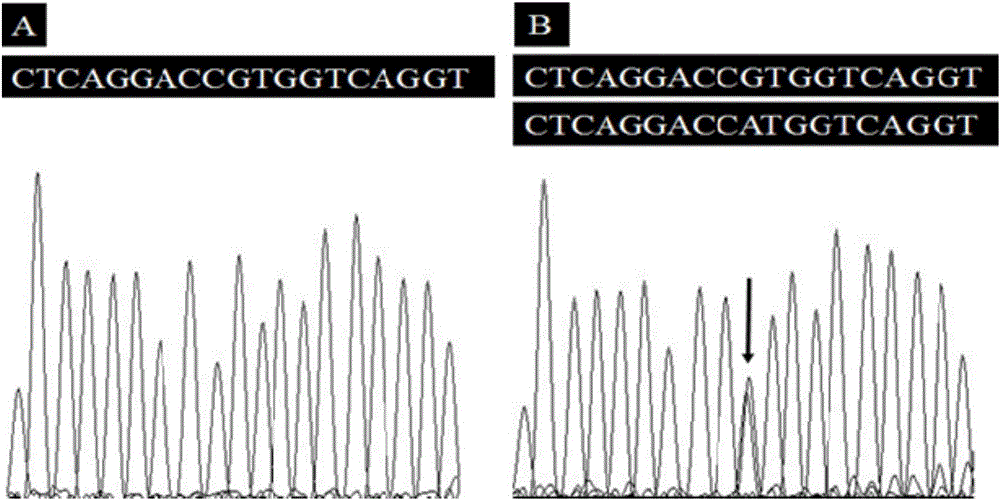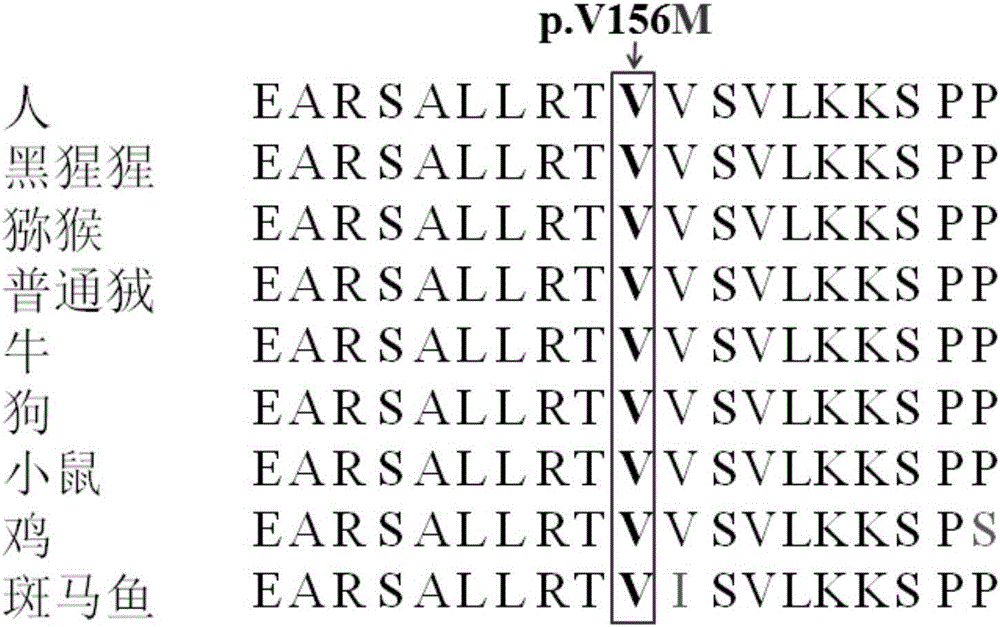Parkinson disease pathogenic gene and detection kit
A technology for detection kits and disease-causing genes, which can be used in the determination/testing of microorganisms, DNA/RNA fragments, recombinant DNA technology, etc. problem, to achieve the effect of simple and easy detection
- Summary
- Abstract
- Description
- Claims
- Application Information
AI Technical Summary
Problems solved by technology
Method used
Image
Examples
Embodiment 1
[0031] A Parkinson's disease-causing gene, which comprises a nucleotide sequence of gene mutation (SEQ ID NO.33):
[0032] TCTGCCTGTTCTCTGAAGGGctaaacaagctgtggctgctctgggggtcattgttcagaggaccatctttctcttcctgcaggtgtcagcggaagcagtggcgggtggatctgccggccaccagcgtggtgatcacgtttcacaatgaagccaggtcggccctactcaggaccAtggtcaggtgaggccaggagatgcattacctgtcaggggtgttaagacattagctgtgtcCCAGGCACAGTCAGACCAG。
[0033] The normal nucleotide sequence is (SEQ ID NO.34):
[0034] tctgcctgttctctgaagggctaaacaagctgtggctgctctgggggtcattgttcagaggaccatctttctcttcctgcaggtgtcagcggaagcagtggcgggtggatctgccggccaccagcgtggtgatcacgtttcacaatgaagccaggtcggccctactcaggaccGtggtcaggtgaggccaggagatgcattacctgtcaggggtgttaagacattagctgtgtcccaggcacagtcagaccag。
[0035] The causative gene was identified using the following method:
[0036] A three-generation autosomal dominant PD family was collected ( figure 1 ) member's peripheral venous blood sample 10ml, after EDTA-K 2 Anticoagulation, the conventional phenol-chloroform method was used to ...
Embodiment 2
[0048] Example 2: A detection kit for Parkinson's disease-causing genes.
[0049] The specific components and contents of the detection kits for the aforementioned PD pathogenic genes are listed in Table 2.
[0050] Table 2: Component list of the detection kit for the PD pathogenic gene of Example 1
[0051]
Embodiment 3
[0052] Embodiment 3: Application of a detection kit of Embodiment 2 in the detection of Parkinson's disease-causing genes.
[0053] Take normal subjects (Ⅲ:6) and patients (Ⅲ:4) as subjects respectively, and perform the following operations:
[0054] 1. Genomic DNA extraction: Collect 10ml of peripheral venous blood samples from two subjects, anticoagulate with EDTA-K2, extract genomic DNA with conventional phenol-chloroform method, measure DNA concentration and OD value with a spectrophotometer, and then dilute to 100ng / μl for later use .
[0055] 2. PCR amplification: use the detection kit designed in Example 2 to amplify the genomic DNA extracted in step 1 to obtain PCR amplification products. The components of the PCR reaction system (25 μl) are: 1 μl of DNA template (ie, the genomic DNA extracted in step 1); 2.5 μl of 10×PCR Buffer; 2.0 μl of 25 mM MgCl 2 10mM dNTP Mix of 0.32 μl; Forward primer (10 μmol / L) of 1.0 μl embodiment 2; Reverse primer (10 μmol / L) of 1.0 μl em...
PUM
 Login to View More
Login to View More Abstract
Description
Claims
Application Information
 Login to View More
Login to View More - R&D
- Intellectual Property
- Life Sciences
- Materials
- Tech Scout
- Unparalleled Data Quality
- Higher Quality Content
- 60% Fewer Hallucinations
Browse by: Latest US Patents, China's latest patents, Technical Efficacy Thesaurus, Application Domain, Technology Topic, Popular Technical Reports.
© 2025 PatSnap. All rights reserved.Legal|Privacy policy|Modern Slavery Act Transparency Statement|Sitemap|About US| Contact US: help@patsnap.com



